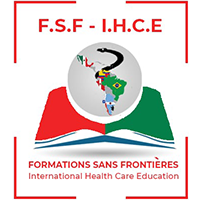During the last week, the situation has become unsustainable, and we have witnessed significant human rights violations as well as proof that the required infrastructure to assist all individuals fleeing their nations is lacking. Particularly for Haitians and the Central American triangle countries.
13,000 Haitian migrants were held by US authorities in a makeshift camp.

The Minister of External Relations of Mexico has called for a regional solution by stating that migrants pass through Peru, Ecuador, Colombia, Panama, Costa Rica, Nicaragua, Honduras, El Salvador, Guatemala and Mexico.
“We have to have an answer, we think, of a regional nature and also with the support of the United Nations to support that the situation in Haiti can improve as soon as possible,” he said.
The Mexican state of Coahuila wants to “stop” the passage of migrants: hotels and transportation will not provide services.
Taxi drivers were suggested to avoid transferring migrants without legal documents.

In the city of Reynosa, Tamaulipas, at this time more than 2000 people are living in public places who were expelled from the USA through title 42.
According to official figures from the National Migration Institute (INM), from January to August a total of 14,733 migrants who were going to the United States were detained in the country, which is equivalent to 605 a day, the highest number of which the authorities have a record.
The figure is not only three times higher than those arrested during the same period of the previous year, but it exceeds the historical record of 522 arrests per day, registered in 2015
It also exceeds the African migrants detained during 2021 by the governments of Spain, Greece, Italy and Germany, whose daily average does not reach 300, according to figures from the European Commission.
According to civil society organizations, migrant detentions in Mexico have become a “hunt,” owing mostly to a June 2019 agreement signed by both nations under pressure from the US.
As part of the pact, the government of President Andrés Manuel López Obrador agreed to deploy its newly created National Guard on its southern and northern borders.
Last April, White House spokeswoman Jen Psaki said there were 10,000 GN elements guarding the southern border. Later, the government of Mexico reported that there were 12,000 officials who were in the area, but not all were from the Guard, there were also personnel from the DIF and other agencies.
This measure was agreed to stop the migratory flow to the United States and allow the expansion of the Migrant Protection Protocols (MPP, known as “Stay in Mexico”), forcing thousands of asylum seekers to wait in Mexican border cities for their asylum hearings in the American Union. The agreement came amid threats from the Trump administration to impose tariffs on Mexican products if the migratory flow was not stopped.
Most of the arrests in Mexico have occurred in Chiapas (72 percent), specifically in Tapachula, the gateway for thousands of migrants, mostly from Haiti, Honduras, El Salvador and Guatemala.
The border city has become a “prison” for the undocumented, who have organized fresh caravans and challenged the National Guard because they are tired of waiting for the Mexican Commission for Refugee Aid (Comar) to decide their asylum applications.
“The National Guard has them trapped, fenced off in Tapachula, where the shelters are overflowing and there is no longer any rental housing or those that exist are priced above seven or eight thousand pesos a month, up to 20 people share a room of four square meters, ”said Josue Castañeda, member of the Collective for the Observation and Monitoring of Human Rights in Southeast Mexico.
The UN requests 588 million dollars for the humanitarian response to El Salvador, Guatemala and Honduras.
In FSF-IHCE Mexico ,we are working hard on our projects to collaborate directly with migrants and especially for children, women and families who are experiencing this serious situation.

